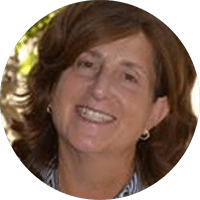Watching our sixth graders perform on Lag Ba’Omer was a particularly poignant, multilayered moment. This was not your typical grade school performance. This year it was a milestone, our largest gathering of students at an assembly. It was a sight. The masked performers—yes, a further hinderance to audibility—looked out at their masked, socially distanced audience, sitting a luxurious three feet apart. They emoted as best they could.
The actors are bringing to life the story of Rabbi Akiva and the well-known Aesop-like fable of the fox and fish. The student dramatically declares, “Just as the fish cannot exist outside of the water so too, we cannot live without Torah.” Its meaning is newly compounded by our real life COVID school year. Its message hits home.
Little does the student-actor know to what degree this classic agada has been animating her school-leaders. When the pandemic’s harsh realities began to unfold and as our schools ventured into the uncharted waters of Spring 2020, my mind swirled as if on a twenty-four-hour loop with teachings deeply ingrained since childhood.
The wisdom of sages became newly prescient and pertinent, their voices pinging like the pulsating pinball machines that were tucked in the corner of the lobby of the Jewish hotel in the Catskills of my childhood. The metal ball is released first hitting Rabbi Akiva’s, “no water, no life” light after which the spirited sphere ricochets quickly to Yehudah Maccabee’s “children must be taught Torah.” From there it bounces with a lightening-like clamor over to Resh Lakish’s “it is the breath of young-ones learning that sustains the world,” and speedily catapults to Mordekhai’s “children must gather to pray, or we shall have no hope.” After a zig zag loop with a shrill finale complete with a triple bing-bing-bing and flashing lights it hits “any town without a Jewish school is likely to be destroyed.”
I am sure that I am not alone. We all had our compelling motivations: mental wellbeing of our students, fear of backsliding in academic achievement, determination to relieve the burden that distance learning was placing on homelife, the desire to offer what public schools are unable to make happen and, finally, let us be honest, the reality that we must keep our institutions solvent. For me, it is the steady loop of these familiar teachings that are animating my every waking hour. This crisis is our test in the long-storied trajectory; will Torah prevail? We are determined; we must open school for in-person learning. We have no choice. We must make this happen, whatever it takes. This is our moment. We are now on one of those historical precipices.
I gently remind the community over Zoom, “You know even in the Warsaw Ghetto there were schools.” Drop the microphone. After a moment of reflection: reality check. I am aware that though we are going through something unprecedented, comparisons to Holocaust are, note-to-self, extreme and over the top. We move forward with the plan to re-open September 1 for in-person school, five days a week for all grades, Early Childhood through Middle School.
The summer brings superhuman efforts to ready the campus and multiple Zoom meetings with parents and teachers to talk things through. A Health Team is put in place as are rigorous daily protocols. The Samis Foundation openheartedly funds our PPE needs along with tech upgrades and assistance with resources to set up outdoors spaces for classes.
The “Hillel Pledge,” a riff on “If I am not for myself, who will be for me and when I am only for myself, how am I?” is created to ensure that we all feel the gravity of the moment. It is of the utmost importance that we all honor COVID protocols to ensure a successful return to school. Education must take precedence over travel, fun, and socializing if this return is to be accomplished safely.
It is now the first week of school. I am touring our newly created outdoor campus with a reporter from the Seattle Times. She pushes me, presses—why, why did you go to such lengths to make this happen? 93 canopies, outdoor classrooms, prayer areas, three honey bucket portable washing stations, iPads, tripods, extra assistants, an additional armed guard, new arrival and dismissal procedures, health screening apps, portable microphones, the list goes on and on. Why, she asked, didn’t you just simply go online or remote as did most schools? I spoke of student-wellbeing, of science, and of societal priorities. She pushed, why not wait it out like most other schools?
The conversation turned a bit raw. I paused, took a breath and went there.
“I would not be alive or standing here with you in the Pacific Northwest if it had not been for a dramatic devotion to Jewish study and a belief that if there is no school for learning, there is no life.” She looked at me and I shared the story that my siblings and I were raised on.
In Stalin’s Russia there are no Jewish schools. My grandfather, Chief Rabbi of Velizh, together with my grandmother, decide that their three oldest sons—aged nine to thirteen—must be smuggled out of the USSR across the border to Poland, to study in the yeshiva of the Hafetz Hayim, despite the danger and expense and the painful separation from their children. “This we do for Torah,” was the trope I heard again and again. That decision ultimately saved the family—not just from Stalin but from the fate which befell the Jews of Velizh in the winter of 1941-1942.
It was a bit intense for that sunny fall day, but she got the picture.
“If there is no water, there is no life.”






Great article — the students were so lucky to have you as their leader. Thanks for writing this article.